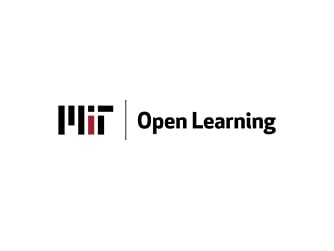MIT Open Learning’s Roadmap for Change in Workforce Education
Drawing on examples from manufacturing, retail and healthcare sectors, The Workforce Education Project's “roadmap for change” preliminary report from MIT Open Learning studied workforce challenges in the U.S. and developed case studies of how organizations are facing these challenges. The report presents a path forward to help expand both educational and job opportunities in the context of today’s workforce environment and demands.
The team recently shared their research and recommendations in a National Academies of Sciences webinar co-hosted by the National Academies’ Government-University-Industry Research Roundtable and its Innovation Policy Forum. Here are some highlights from that discussion.
Well before the coronavirus pandemic hit, society was facing serious and growing economic inequality. Formerly middle-class jobs have shifted downward, and many workers find themselves in lower-end, lower-paid service sector jobs. The COVID-19 upheaval has only accelerated these problems. With so many layoffs and furloughs, unemployment numbers are climbing.
At the same time, new and experienced workers alike need to up-skill to keep pace with the rise of new technologies in the workplace. Across all industries, digital literacy requirements are increasing rapidly, with new business models demanding employees become tech-fluent—from guiding customers through purchase decisions in retail, to understanding tools that can create more efficiency on manufacturing floors.
This puts outsized pressure on workers without college degrees or technology training. The result? Further widening of the gap between highly-paid tech-savvy professionals and those without four-year degrees who’ve worked in more manual, “old economy” roles.
“New graduates are not bringing with them the skills needed for in-demand job roles. And even within corporations, learning teams struggle to more closely connect learning with work. New approaches, technologies and tools open up new possibilities to solve these challenges.”
-- Sanjay Sarma, Vice President for Open Learning at MIT and a co-author on The Workforce Education Project report
“There is a disconnect between the education and training being delivered and the actual jobs that need to be done,” says Sanjay Sarma, Vice President for Open Learning at MIT and one of the researchers on the the Workforce Education Project and a co-author of the report. “New graduates are not bringing with them the skills needed for in-demand job roles. And even within corporations, learning teams struggle to more closely connect learning with work. New approaches, technologies and tools open up new possibilities to solve these challenges.”
As highlighted by the report, the U.S. lacks a sound and readily accessible workforce education system. And the current pandemic makes workforce education reform even more urgent. Many hard-hit sectors will decline, and workers will need to change to new, more promising job fields.
For everyone’s long-term wellbeing and success, education organizations, companies, governments and communities must prioritize workforce education reform so we can address these challenges:
- Improve the skills of unemployed, underemployed and incumbent workers so they can find quality jobs
- Improve the organizations in workforce education to better reach and educate new talent
- Help develop stronger technology/digital and other skills and capability across the current workforce
Discussed in more detail in the report, these findings and recommendations could help make real headway on such critical issues.
The optimal workforce education system needs to be far more agile than the current one. Blended learning – in person and online – will be vital to scale up the system to meet the needs., So we will need more embedded online approaches and techniques proven effective by the latest learning science and neurological research. It will also have to be adapted to better fit groups with different backgrounds.
“Creating more powerful and flexible offerings for learners is required if we are to help higher education institutions and corporate organizational development teams scale and design learning for such varied ages, experience, backgrounds, and career goals.”
-- William Bonvillian, Senior Director of Special Projects, MIT Open Learning and a co-author on The Workforce Education Project report
According to William Bonvillian, Senior Director of Special Projects, MIT Open Learning and a co-author on The Workforce Education Project report, “Creating more powerful and flexible offerings for learners is required if we are to help higher education institutions and corporate organizational development teams scale and design learning for such varied ages, experience, backgrounds, and career goals.” Lessons for online workforce education delivery include:
- Break down learning into bite-sized chunks—a series of sprints, not a marathon. When faced with busy learners and the challenge of holding attention over long periods of time, learner leaders have found shorter, modular chunks are more effective.
- Hands-on learning is more real and more relevant. Organizational development has been trending this way for years. Now with virtual reality and simulations, learners can practice skills in a safe environment with less risk. Educators need to partner with employers and technology providers to find ways to scale these solutions more cost-effectively.
- Enlist new education delivery modalities and learning platforms to reach more learners—including non-traditional ones. From MOOCs to YouTube, online learning is a way to meet the current challenge of remote work at scale. Companies and colleges can design more targeted learning where there is the greatest need to build skills, offer flexible learning that fits in with learners’ schedules.
- Recreate the education experience with omni-channeling. Hybrid models that combine online learning over time with in-person learning and job task-related self-paced independent learning can be very successful.
- New education technologies (edtech) can help rebuild the learning information system. From job navigators to crowdsourced learning and automatic assessment engines, technology can democratize and enhance the learning experience.
Learning opportunities connected throughout the high school, college, and post-college experience, such as apprentice programs in companies, can teach important career skills while setting realistic expectations for those new to the workforce.
Community college programs can also build in-demand skills for both pre-career and mid-career professionals in new ways. They can deliver these skills not only to their own students but to high school students and incumbent workers. They can create short programs for underemployed workers for core skills that take ten weeks not two years. And they can use new, demonstrated approaches to sharply increase their completion rates.
Working with employers and colleges, they can offer a more attainable set of recognized credentials. Universities can work with the others in the system on online education elements, on life-long learning, on the learning science, and on articulation agreements to connect the system. All of this will create more paths to opportunities and build a more diverse and robust pipeline of skilled workers.
The preliminary report identifies a series of new models that could fill the gaps and make a significant difference in the way this system performs. In October 2020, MIT's Task Force on the Future of Work released three new research briefs that explore the flaws and opportunities of current workforce training solutions in the U.S. and Europe.



